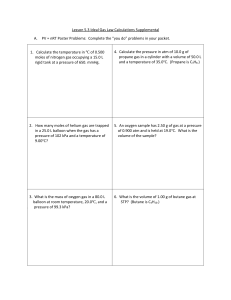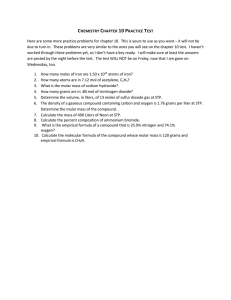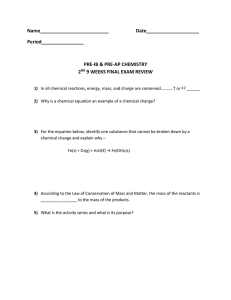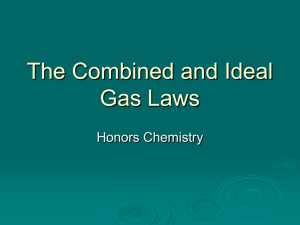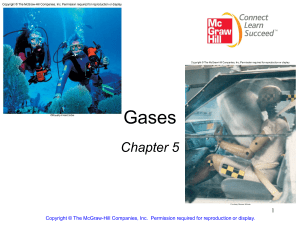AP Chemistry Gas Laws and Stoichiometry 3 Scenarios:
advertisement
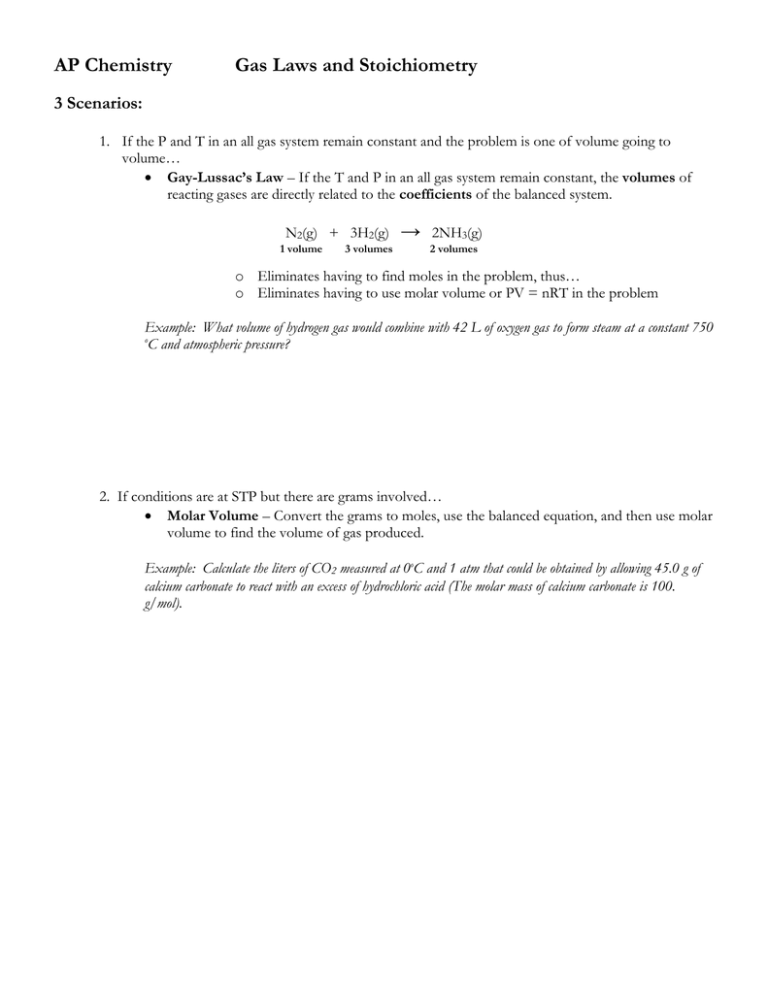
AP Chemistry Gas Laws and Stoichiometry 3 Scenarios: 1. If the P and T in an all gas system remain constant and the problem is one of volume going to volume… Gay-Lussac’s Law – If the T and P in an all gas system remain constant, the volumes of reacting gases are directly related to the coefficients of the balanced system. N2(g) + 3H2(g) 1 volume 3 volumes → 2NH3(g) 2 volumes o Eliminates having to find moles in the problem, thus… o Eliminates having to use molar volume or PV = nRT in the problem Example: What volume of hydrogen gas would combine with 42 L of oxygen gas to form steam at a constant 750 o C and atmospheric pressure? 2. If conditions are at STP but there are grams involved… Molar Volume – Convert the grams to moles, use the balanced equation, and then use molar volume to find the volume of gas produced. Example: Calculate the liters of CO2 measured at 0oC and 1 atm that could be obtained by allowing 45.0 g of calcium carbonate to react with an excess of hydrochloric acid (The molar mass of calcium carbonate is 100. g/mol). 3. If conditions are not at STP and there are grams involved. PV = nRT – Must use the ideal gas equation to get to moles, then use the balanced equation, then use the ideal gas equation again to find volume, pressures, etc. Example – A sample of methane gas having a volume of 2.80 L at 25 oC and 1.65 atm was mixed with a sample of oxygen gas having a volume of 35.0 L at 31 oC and 1.25 atm. The mixture was ignited to form carbon dioxide and water. Calculate the volume of CO2 formed if at the end of the reaction the CO2 is at a pressure of 2.50 atm and a temperature of 125 oC.

